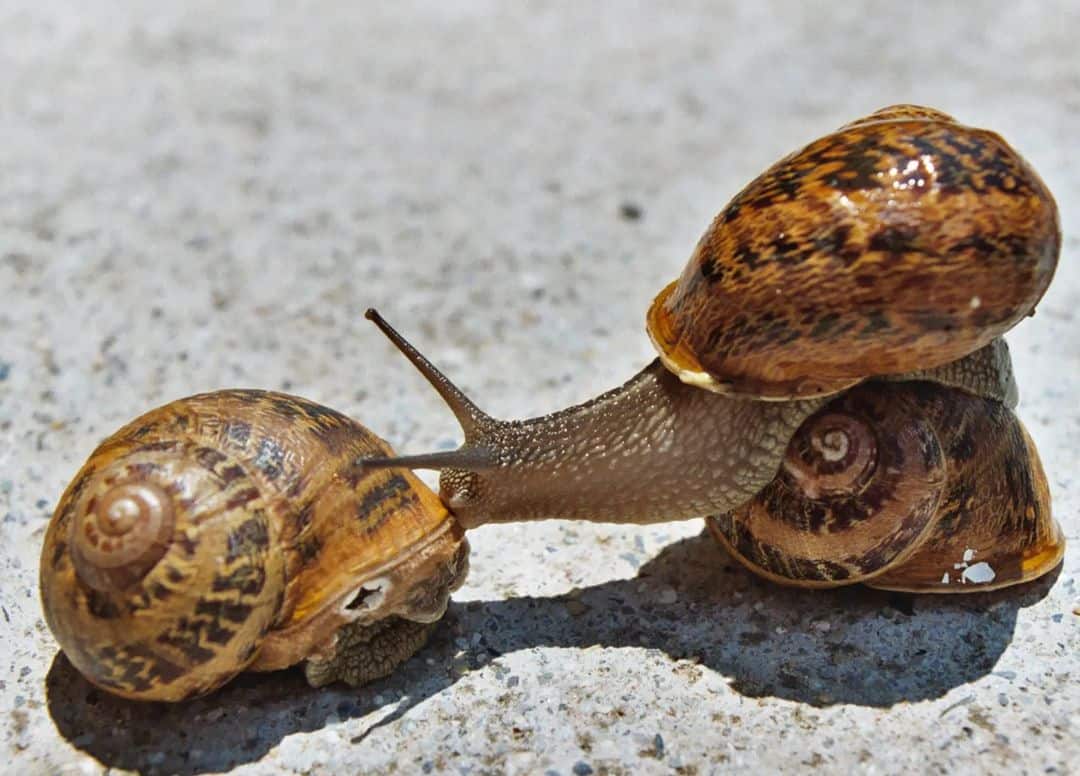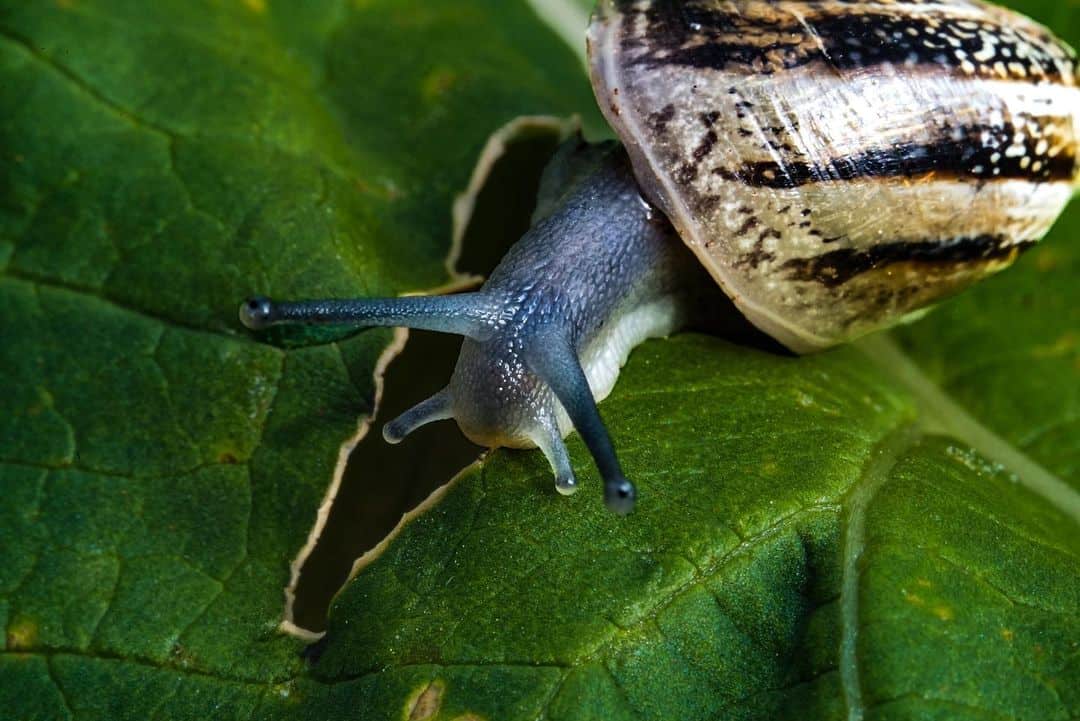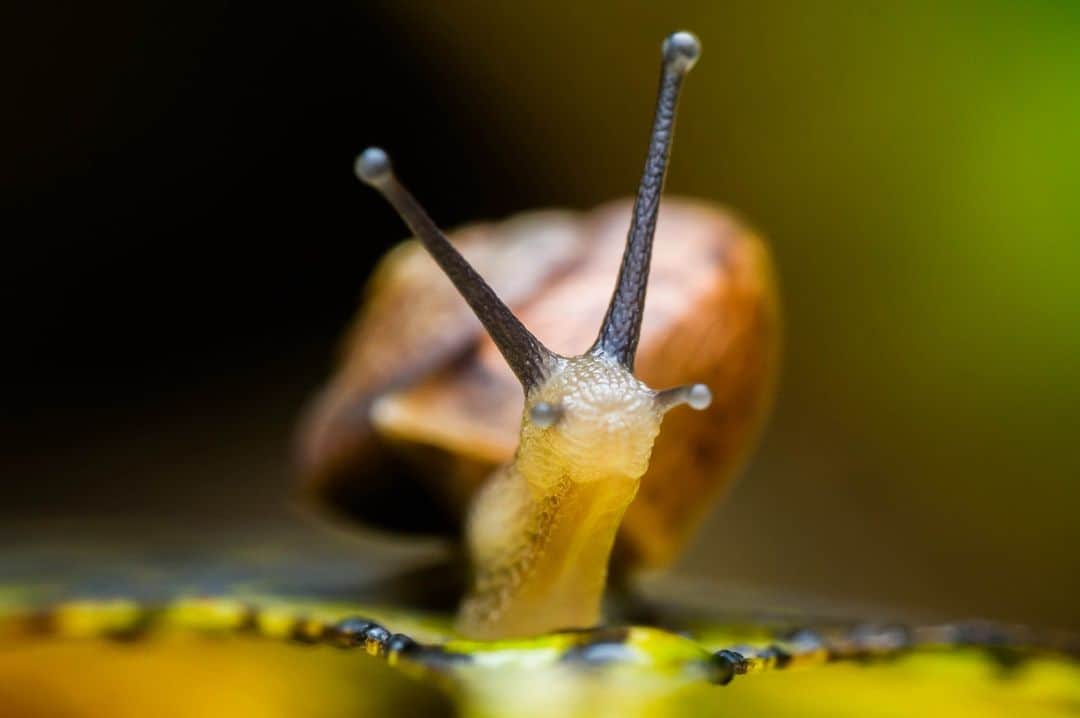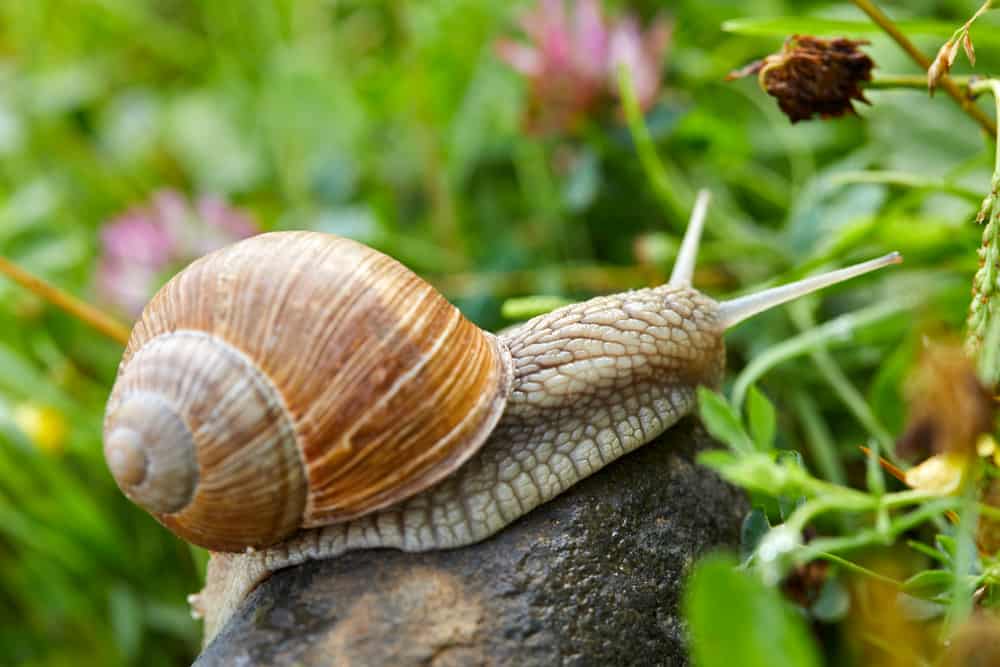Many people find snails repulsive and it’s understandable, considering their slimy and sticky bodies. However, there are a ton of fun snail facts that may change your mind about them. Snails are intriguing creatures, and their digestive system is one of the reasons.
How many teeth do snails have? How do they digest food? What does snail poop look like? Is it dangerous for humans? Continue reading to find out the answers to these questions and more useful information about snails.
What Do Snails Eat?
Most of the snail species eat everything they can find. This includes vegetables, leaves, grass, flowers, worms, and insects on land, and fish food, algae, and plants in aquariums. Some snail species, such as assassin snails, even like to eat other snails.
There are a lot of snail species that are detritivores, meaning that they eat decomposing organic matter, such as waste from other animals and decaying plants. These animals are far from picky eaters. It is probably another reason why most people find them gross.
How Do Snails Digest Food?
Snails have developed over time to be able to digest almost anything they can find in their natural habitats. It’s a pretty fascinating ability for such a small animal, and one they need to survive.
Since snails are so slow, they need to have something working in their favor. While it is not speed or the ability to hunt food, its digestive system is as useful as it gets.
It all starts with a snail’s mouth, located at the front of their bodies, right by the tentacles. A snail’s mouth is equipped with a whopping 14 000 teeth. Yes, you read that right! A common garden snail has thousands of teeth, while some species have even more.
This doesn’t mean that a snail can bite you. Technically, it can, but it won’t hurt. It just feels like a rough tongue on your skin.
Snails also produce saliva that helps them break down the food they consume. Once the food is mixed with saliva, it goes through the esophagus down to the crop with the help of muscular contractions.
A crop is an organ that can be described as a snail’s stomach. It is where a snail keeps food as storage and where the food mixes with the enzymes to be broken down further.
Food then travels from a crop to a gizzard, another organ whose purpose is to grind the food and break it down into smaller pieces.
After the food has been digested, it travels through the intestine towards the anus. A snail’s anus is located on the front of a snail’s body, near a mantle cavity. A mantle cavity is an organ that is in charge of helping snails breathe.
Contrary to the popular misconception, snails do not excrete waste through their mouths.
How To Identify Snail Poop?
A snail’s poop looks different depending on what species of snail we talk about.
A common garden snail’s poop looks like a thin, slimy pipe. It differs in color depending on what a snail ate before, but it is usually green, brown, or black. Once it dries out, it shrinks and gets lighter.
A mystery snail’s poop is often mistaken for this species’ eggs. This is because it resembles rice grains, just as eggs do. It differs in color based on what a snail ate, but since mystery snails usually eat algae and plants from the aquarium, it is often green or dark brown.
You can differentiate mystery snail’s eggs from poop by the number of “grains” that you can see. These snails usually lay tens to a hundred eggs per hatch, so if you see clusters it is most likely not poop. Poop is excreted without any clear patterns, all over the aquarium.
Another way to tell a mystery snail’s poop from its eggs is by the color. While this snail’s poop is dark, its eggs are translucent or white with a black dot inside.
In general, the poop of land snails resembles a thin, slimy tube, and you can find it all over your garden or the terrarium if you keep snails inside. Snails eat a lot if given a chance, so the more they eat, the more poop you are likely to see all around.
Aquatic snails’ poop usually resembles pellets or rice grains. You can find it all over the aquarium and there is a chance you can mistake it for your snails’ eggs, especially if you are a newbie when it comes to keeping snails.

nycshell
How Often Do Snails Poop?
The frequency of snails excreting waste depends on the species and on the amount of food a snail eats. It can vary between a couple of times per day to days without pooping.
While efficient, a snail’s digestive system is just as slow as the snails themselves are. This means that it can sometimes take days for a snail to excrete waste. However, if they have an abundance of food and eat a lot, snails can poop up to several times per day.
Keep in mind that snails can survive without food for a long time. They can skip eating for weeks and still live. Snails can also hibernate and estivate for up to three years, so during this time, they don’t eat either. When they don’t digest any food, they don’t produce any waste.
Do Snails Make a Lot of Waste?
Snails usually don’t make a lot of waste. Even when they poop several times per day, their feces are small and thin, so it’s easy to get rid of them.
The problem can arise if your snails live in a confined space, whether it’s a terrarium or an aquarium. No matter how small a snail’s poop is, if it accumulates over time, it will be much more difficult to get rid of it. It is also not hygienic for you or your snails.
Does Snails’ Poop Smell?
With all this talk about snails’ poop, you may be wondering if it smells. The answer is no, snails’ feces don’t have any strong or unpleasant odor. One of the reasons for this is that snails’ poop is so small that it would take a lot of it for you to actually smell anything.
If you are keeping a snail as a pet and you notice a strong or offensive smell, you should take it to a vet. It can be a sign of an underlying health condition or disease.

macro_wurx
How To Clean Snail Poop?
Cleaning snails’ poop is not necessary if you have snails in your backyard. In fact, you will probably not even come across snails’ feces unless you actively look for them, because they blend in with grass, soil, and dirt easily.
However, if you notice that there is a lot of snails’ poop in your garden for whatever reason, you should clean it. Make sure to wear gloves and scoop them up using a piece of cardboard or some other disposable object. Throw it in a plastic bag and then in the trash.
If you want to clean your aquarium from snails’ poop, you can use a fishnet for floating feces. This is possible only if you notice snails’ waste right away, otherwise, it can sink to the bottom of the aquarium. Of course, ensure that you don’t accidentally pick any of your aquarium animals.
If you want to deep clean your aquarium, move your snails and other animals to another safe container first. Then, use an aquarium siphon and vacuum all the snails’ poop you can see. Then, refill the aquarium with clean water and return the animals to their habitat.
Is Snail Poop Harmful to Humans?
If you already looked up this question, you may have read that snails’ poop is not harmful to humans. I don’t agree with this because snails’ feces can contain bacteria and parasites that can not only be harmful but also fatal to humans.
Not to scare you, but if you accidentally touched snails’ poop, it is most likely that nothing bad will happen. However, you shouldn’t deal with snails’ feces without wearing gloves and washing your hands thoroughly after.
Do Snails Pee?
Yes, snails do urinate. They do so through an opening called nephridiopores. Snails even have little kidneys that filter the waste, just as humans do.

bern31photowalk
Conclusion
Snails are far more complex creatures than they initially seem. While they are slow and considered to be gross by many, they have an interesting digestive system, including their tens of thousands of teeth.
Snails poop through the anus, a hole located at the front of their body. A snail’s poop varies in appearance depending on the species and it can be of different colors depending on what a snail eats. Usually, it is green, brown, or black, and gets paler once it dries out.
You should clean your snails’ habitat regularly, whether it’s your garden, terrarium, or aquarium. Deal with this task using gloves and don’t forget to wash your hands immediately after.
I hope this helped answer the questions you had about snails’ poop. If you have something else you want to ask, please don’t hesitate to leave a comment!
